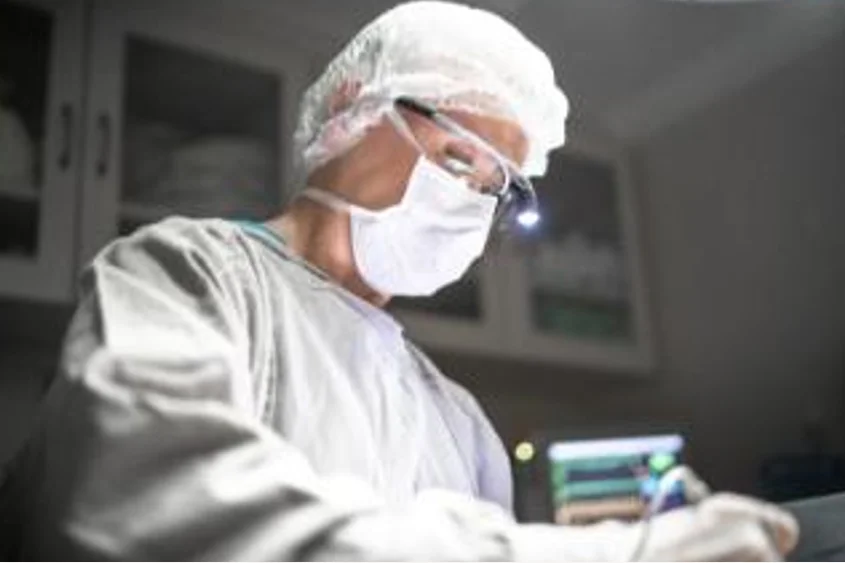Understanding Robotic Laparoscopic Ureter Re-implant Surgery: A Patient’s Guide
- Updated on: Dec 23, 2023
- 4 min Read
- Published on Dec 23, 2023

Robotic laparoscopic ureter re-implant surgery is a modern medical procedure designed to address issues related to the ureters, the tubes that carry urine from the kidneys to the bladder. This advanced surgical technique uses robotic assistance and minimally invasive methods to reposition or reconstruct the ureters.
What is Robotic Laparoscopic Ureter Re-implant Surgery?
Robotic laparoscopic ureter re-implant surgery is a procedure performed using a robotic system, which allows surgeons to operate with enhanced precision, flexibility, and control. This minimally invasive technique involves making small incisions and using a laparoscope – a thin tube with a camera and light – to view the internal organs. The robotic system then assists the surgeon in re-implanting the ureter into the bladder.

Indications for the Surgery
This surgery is typically recommended for conditions like ureteral obstruction, vesicoureteral reflux (where urine flows back from the bladder to the ureters), or damage to the ureters due to disease or injury. It’s an essential procedure for restoring normal urine flow and preventing kidney damage.
Benefits of Robotic Laparoscopic Approach
The use of robotic laparoscopic techniques in ureter re-implant surgery offers several advantages:
Precision: The robotic system enhances surgical accuracy, reducing the risk of complications.
Minimal Invasion: Small incisions reduce pain and scarring compared to open surgery.
Reduced Blood Loss and Pain: This approach typically results in less blood loss and postoperative pain.
Faster Recovery: Patients usually experience a quicker recovery and shorter hospital stay.
Better Outcomes: Enhanced visualization and precision lead to better surgical outcomes.
Preparing for the Surgery
Pre-Surgical Evaluation
Before the surgery, you’ll undergo a thorough evaluation, including medical history review, physical examination, and diagnostic tests like imaging scans. This helps in planning the surgical procedure.
Discussing Medications
Inform your surgeon about any medications you’re taking, as some may need to be adjusted or stopped before surgery.
Fasting
You’ll likely be asked to fast for several hours before the procedure to prepare your body for anesthesia.
The Surgical Procedure
Anesthesia
The surgery begins with the administration of general anesthesia, ensuring you’re asleep and pain-free throughout the procedure.
Making Incisions
The surgeon makes small incisions in your abdomen to insert the laparoscope and robotic instruments.
Robotic Assistance
The surgeon operates the robotic system from a console, guiding the instruments to re-implant the ureter.
Monitoring
Throughout the surgery, your vital signs are closely monitored to ensure safety.
Post-Surgical Care
Hospital Recovery
Immediately after the surgery, you’ll be taken to a recovery area. Most patients stay in the hospital for a short period to ensure there are no complications.
Pain Management
You’ll receive medication to manage any discomfort following the surgery.
Physical Activity
Gradual return to normal activities is encouraged, but heavy lifting and strenuous exercise should be avoided for a few weeks.
Follow-Up
Follow-up appointments are crucial for monitoring your recovery and the success of the surgery.
Risks and Complications
Like any surgical procedure, robotic laparoscopic ureter re-implant surgery carries risks, including infection, bleeding, and damage to surrounding organs. However, the risk of complications is generally lower compared to open surgery.
Recovery and Outcomes
Recovery times vary, but many patients return to normal activities within a few weeks. The long-term outcomes of this surgery are generally positive, with improved urinary function and quality of life.
The bottom line
Robotic laparoscopic ureter re-implant surgery represents a significant advancement in the treatment of ureteral conditions. Its minimally invasive nature, combined with the precision of robotic assistance, offers effective treatment with fewer complications and a quicker recovery. If you’re considering this procedure, discuss it thoroughly with your healthcare provider to understand its benefits and risks in the context of your specific medical condition.
Remember, being well-informed and actively participating in your healthcare decisions are key to achieving the best outcomes. This surgery, while advanced and technical, is ultimately aimed at improving your health and wellbeing.
FAQs
How long does the recovery process take after robotic laparoscopic ureter re-implant surgery?
Recovery times vary, but most patients experience significant improvement within a few weeks. Full recovery may take several weeks to a few months, depending on individual factors and adherence to post-operative care.
Are there any potential complications associated with robotic ureter re-implant surgery?
While complications are rare, they can include infection, bleeding, or reactions to anesthesia. It's crucial to follow post-operative instructions, attend follow-up appointments, and promptly report any unusual symptoms to your healthcare provider.
Can robotic laparoscopic ureter re-implant surgery be performed on pediatric patients?
Yes, this minimally invasive procedure is suitable for pediatric patients. However, the decision depends on the child's specific condition and the surgeon's expertise. Pediatric cases often require specialized considerations, and consultation with a pediatric urologist is essential.
How does robotic laparoscopic ureter re-implant surgery compare to traditional open surgery in terms of scarring?
Robotic laparoscopic surgery typically results in smaller incisions, leading to less noticeable scarring compared to traditional open surgery. The smaller incisions contribute to reduced pain and a quicker return to normal activities.
What should patients expect during the pre-operative evaluation for robotic ureter re-implant surgery?
The pre-operative evaluation involves a thorough medical history review, imaging studies, and possibly blood tests. Patients may also undergo consultations with an anesthesiologist and the surgical team. This comprehensive assessment ensures the patient is well-prepared and provides valuable information for the surgical planning process.












